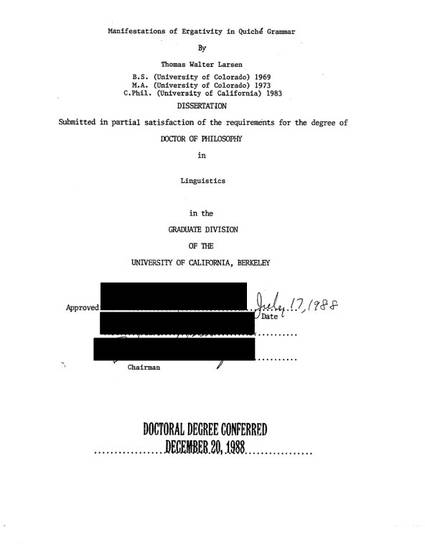
This study examines the various types of ergative phenomena in the grammar of the Mayan language Quiche spoken in Guatemala. There is a brief discussion of the phonology of Quiche together with a discussion of the various orthographies which have been used to write the language. This is followed by discussions of the morphology of pronouns, nouns, adjectives, intransitive verbs, transitive verbs, positionals, adverbs, and particles. These discussions include a complete and thorough account of the inflectional morphology, including the ergative/absolutive verb agreement system. There are also brief discussions of the more important derivational processes. This is followed by a discussion of word order and its functions in discourse. It is shown that the patterning of lexical NP arguments of verbs in discourse reflects a universal ergative patterning of information flow. Next some of the major syntactic constructions are described. These include subordinate clauses, negation, reflexives and reciprocals, and voice (passive, antipassive, and instrumental). This is followed by an in-depth treatment of WH-movement, including a formal analysis of the Focus Antipassive construction utilizing Government-Binding theory. The study concludes with a discussion of the ways in which ergativity is manifested in Quiche syntax. There is a discussion of some previous treatments of syntactic ergativity in the languages of the world, and it is shown that it is not perfectly clear whether or not Quiche is syntactically ergative by the criteria of these previous studies. However, it is also shown that, given the syntactic analysis that is argued for in this study, Quiche does manifest syntactic ergativity in an unusual way, namely that intransitive subjects, like transitive direct objects, are both constituents of the verb
- K'ichee' language,
- Mayan languages,
- Linguistics,
- Syntax,
- Ergativity
Available at: http://works.bepress.com/tom_larsen/1/
